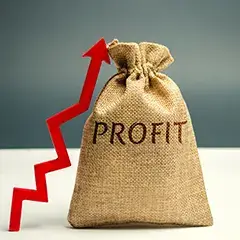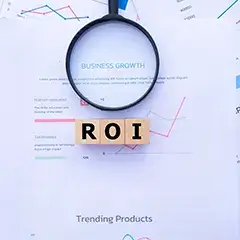
6 Steps to Set Realistic Goals for Trade Show Success
Just like any other marketing or sales campaign, it’s the actions you take before your next trade show that will play the biggest part in determining your results.
Goal setting is an important step in preparing for any trade show. The right goals and objectives will guide your trade show booth design process, help your team remain motivated throughout the show and serve as an important post-event barometer for your success.
However, setting these goals can be a challenging process. Should you aim for the stars with an ultra-ambitious sales target (and risk failure in the process) or keep your trade show sales goals more modest and realistic?
In this guide, we’ll share six steps that you can use to set realistic, achievable objectives for your next trade show. Used right, this process can help you create goals that keep your team focused and motivated, all while creating a realizable target for your business.
 First event? Focus on being profitable, not on being highly profitable
First event? Focus on being profitable, not on being highly profitable
Your first trade show will always be a learning experience for your business, making it more important to focus on generating more profits than your total trade show costs than generating an incredible return on investment.
As such, it’s best to keep your expectations modest for your first trade show. Focus on earning enough to cover your costs, and leave the big ROI figures for future events.
This way, you’ll come out of your first trade show ideally without any losses, all armed with the event knowledge and experience you’ll need to turn future events into growth opportunities for your business.
Keep your budget reasonable, as higher costs mean higher targets
The more you spend on your exhibit, the more you’ll need to earn from sales, contracts and new deals to break even or generate a profit from the trade show.
Because of this, it’s best to keep your budget as low as possible for your first few events while you focus on gaining a “feel” for trade show marketing.
The lower your budget, the more wiggle room you have to underperform while still coming out of the event with a profitable result. This approach not only saves money — it also lowers pressure on your sales reps, helping them get into the rhythm of the show and generate results.
Use previous events as a baseline for your team’s sales performance
After you’ve exhibited at several trade shows, you’ll gain a good understanding of how well your team performs in an event environment.
This means that you can use previous events as a baseline for future ones, with targets based on your previous results instead of predictions. With a gradual increase in your targets for each event, you’ll be able to make stable, realistic and achievable progress over time.
It’s important to remember that even a modest increase in sales targets (for example, 10% over the previous year) can have a significant impact on your total revenue and return on investment over time.
Track your lead generation and sales efforts as strictly as possible

One of the most common trade show ROI and goal-setting mistakes is failing to track every lead and prospect your sales team generates during the event.
Without accurate tracking, it’s impossible to accurately assess your team’s performance and see if you achieved your goals. As the saying goes, “what gets measured, gets managed.”
Sometimes, missing a single lead (especially one that converts into a profitable, lucrative deal) is all it takes to change your assessment of an event’s performance from accurate and useful to completely inaccurate.
To make sure you track your trade show results accurately, check that all of your leads, deals, and prospects are recorded in CRM software during the event. This way, you can follow up on leads over time and assess long-term performance without missing a single detail.
Monitor ROI over the long term, not just right after the event
Another common trade show goal-setting and ROI measuring mistake is to only measure ROI in the short term — often immediately after the event ends.
Trade show leads can take weeks, months or even years to convert into lucrative deals, making it vitally important that you track the revenue from each trade show over the long term. Often, a prospect that you might write off as “inactive” could become your best customer one year later.
It’s also important to remember that the customers and clients you gain from a trade show can generate value for years or decades into the future. Review your results from each trade show on a yearly basis and there’s a good chance you’ll notice a gradual, concrete increase in ROI.
Use previous event performance to predict future ROI
 Finally, once you’ve attended trade shows for several years, you’ll be able to calculate a rough value per lead, prospect, and conversation for future events.
Finally, once you’ve attended trade shows for several years, you’ll be able to calculate a rough value per lead, prospect, and conversation for future events.
With this knowledge, you can create metrics such as average customer lifetime value (CLV) to calculate your return on investment and sales performance from future trade shows without the usual time commitment.
Predictive metrics aren’t perfect, and few will give you an exact picture of the results you should expect from a trade show. However, they can be hugely useful in helping you assess ROI on the fly, letting you judge the value of future trade shows and industry events as they happen.
